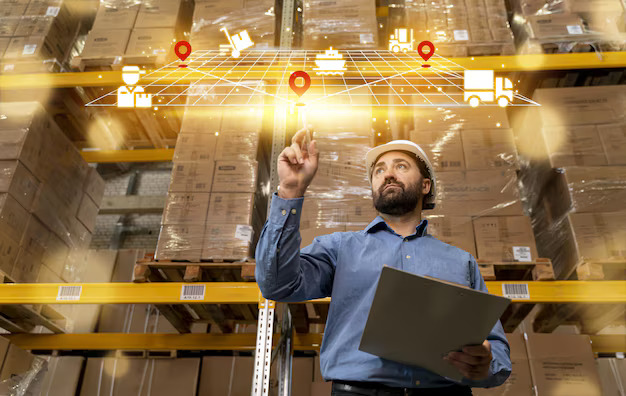
Dropshipping vs Amazon FBA: Which
Business Model Wins in 2025?
Choosing the right ecommerce business model can make or break your entrepreneurial journey. Two of the most popular models—dropshipping and Amazon FBA—each offer unique advantages and challenges. This comprehensive comparison will help you decide which model aligns best with your goals, budget, and business vision for 2025.
Understanding Each Business Model
What is Dropshipping?
Dropshipping is a retail fulfillment method where you sell products without holding inventory. When a customer places an order, you purchase the item from a third-party supplier who ships it directly to the customer. You act as the middleman, handling marketing and customer service while the supplier manages inventory and fulfillment.
What is Amazon FBA?
Amazon FBA (Fulfillment by Amazon) involves purchasing inventory upfront and sending it to Amazon's warehouses. Amazon handles storage, packaging, shipping, and customer service, while you focus on product sourcing, marketing, and business growth. You leverage Amazon's massive customer base and logistics network.
Startup Costs Comparison
Dropshipping Startup Costs
- Initial Investment: $500 - $2,000
- Website/Store Setup: $29-79/month (Shopify) + theme costs
- Marketing Budget: $500-2,000/month for paid advertising
- Tools and Apps: $50-200/month for essential apps
- No Inventory Costs: Major advantage for cash-strapped entrepreneurs
Amazon FBA Startup Costs
- Initial Investment: $5,000 - $15,000+
- Product Sourcing: $2,000-10,000 for initial inventory
- Amazon Fees: $39.99/month + fulfillment fees
- Product Photography: $200-1,000 for professional photos
- Marketing (PPC): $500-3,000/month for advertising
Profit Margins Analysis
Dropshipping Profit Margins
- Typical Margins: 10-30% (after advertising costs)
- Challenges: High competition drives advertising costs up
- Advantages: No inventory risk or storage costs
- Reality Check: Many dropshippers struggle with 5-15% actual profit
Amazon FBA Profit Margins
- Typical Margins: 25-45% (after all fees and costs)
- Amazon Fees: 15-17% in fees, plus FBA fulfillment costs
- Higher Upfront Risk: But potentially better long-term returns
- Economies of Scale: Margins improve with volume
Time Investment and Scalability
Dropshipping Time Commitment
- Daily Operations: 6-10 hours managing ads, customer service, supplier issues
- Customer Service: Heavy involvement required for order issues and returns
- Supplier Management: Constant communication and quality control
- Scaling Challenges: Personal time investment increases with growth
Amazon FBA Time Commitment
- Setup Phase: High initial time investment for product research and launch
- Ongoing Management: 2-4 hours daily once established
- Automation Potential: Amazon handles most customer service and fulfillment
- Scaling Advantages: Easier to add new products and automate processes
Market Control and Brand Building
Dropshipping Brand Control
- Full Control: Complete ownership of customer experience and branding
- Custom Website: Build your own branded shopping experience
- Customer Data: Access to valuable customer information and analytics
- Flexibility: Easy to pivot products and test new markets
Amazon FBA Brand Limitations
- Platform Dependency: Subject to Amazon's rules and potential account suspension
- Limited Branding: Restricted customization options on product pages
- Customer Ownership: Amazon controls customer relationships
- Competition: Direct competition with other sellers and Amazon's private label
Risk Assessment
Dropshipping Risks
- Supplier Reliability: Dependent on third-party suppliers for quality and shipping
- Market Saturation: Easy entry leads to intense competition
- Ad Platform Changes: Facebook/Google policy changes can kill businesses overnight
- Chargebacks: Higher chargeback rates due to longer shipping times
- Thin Margins: Little room for error in pricing and advertising
Amazon FBA Risks
- Inventory Risk: Capital tied up in inventory that may not sell
- Account Suspension: Amazon can suspend accounts, freezing your business
- Competition: Easy for competitors to copy successful products
- Policy Changes: Amazon frequently updates policies affecting sellers
- Seasonal Fluctuations: Inventory planning becomes complex
2025 Market Trends and Predictions
Dropshipping Outlook
- Increased Competition: More saturated markets and higher advertising costs
- Platform Restrictions: Stricter policies on Facebook and Google ads
- Consumer Expectations: Faster shipping demands challenge traditional dropshipping
- Opportunities: New platforms like TikTok Shop offer fresh opportunities
Amazon FBA Outlook
- Growing Opportunity: Amazon's continued growth creates more opportunities
- International Expansion: Easier global expansion through Amazon's infrastructure
- Brand Registry Benefits: Amazon invests more in protecting legitimate brands
- AI Integration: Better tools for product research and optimization
Which Model Should You Choose?
Choose Dropshipping If:
- Limited Capital: You have less than $5,000 to invest
- Want Full Control: You prefer owning the entire customer experience
- Risk Averse: You want to test markets without inventory investment
- Marketing Skills: You have strong digital marketing and advertising skills
- Flexibility: You want the ability to quickly pivot and test new products
Choose Amazon FBA If:
- Available Capital: You have $10,000+ to invest in inventory
- Long-term Vision: You're building for sustainable, scalable growth
- Less Time Available: You want a more passive business model
- Product Focus: You prefer focusing on product development over marketing
- Trust in Amazon: You're comfortable building on Amazon's platform
Hybrid Approach: Best of Both Worlds
Many successful entrepreneurs use a hybrid approach:
- Start with Dropshipping: Test products and markets with minimal risk
- Identify Winners: Find profitable products through dropshipping
- Scale with FBA: Move successful products to Amazon FBA for better margins
- Diversify Channels: Maintain both models for different product categories
Final Recommendation
Both dropshipping and Amazon FBA can be profitable in 2025, but they serve different entrepreneurial profiles and goals. Dropshipping offers lower barriers to entry and more control, making it ideal for testing business ideas and learning ecommerce fundamentals. Amazon FBA provides better scalability and profit potential but requires more capital and comes with platform dependency risks.
The most successful entrepreneurs often start with one model to gain experience and capital, then expand to include the other. Regardless of which path you choose, success in either model requires dedication, continuous learning, and the ability to adapt to changing market conditions.
Consider your current situation, risk tolerance, and long-term goals when making this decision. Remember, the best business model is the one you can execute consistently and profitably over time.
